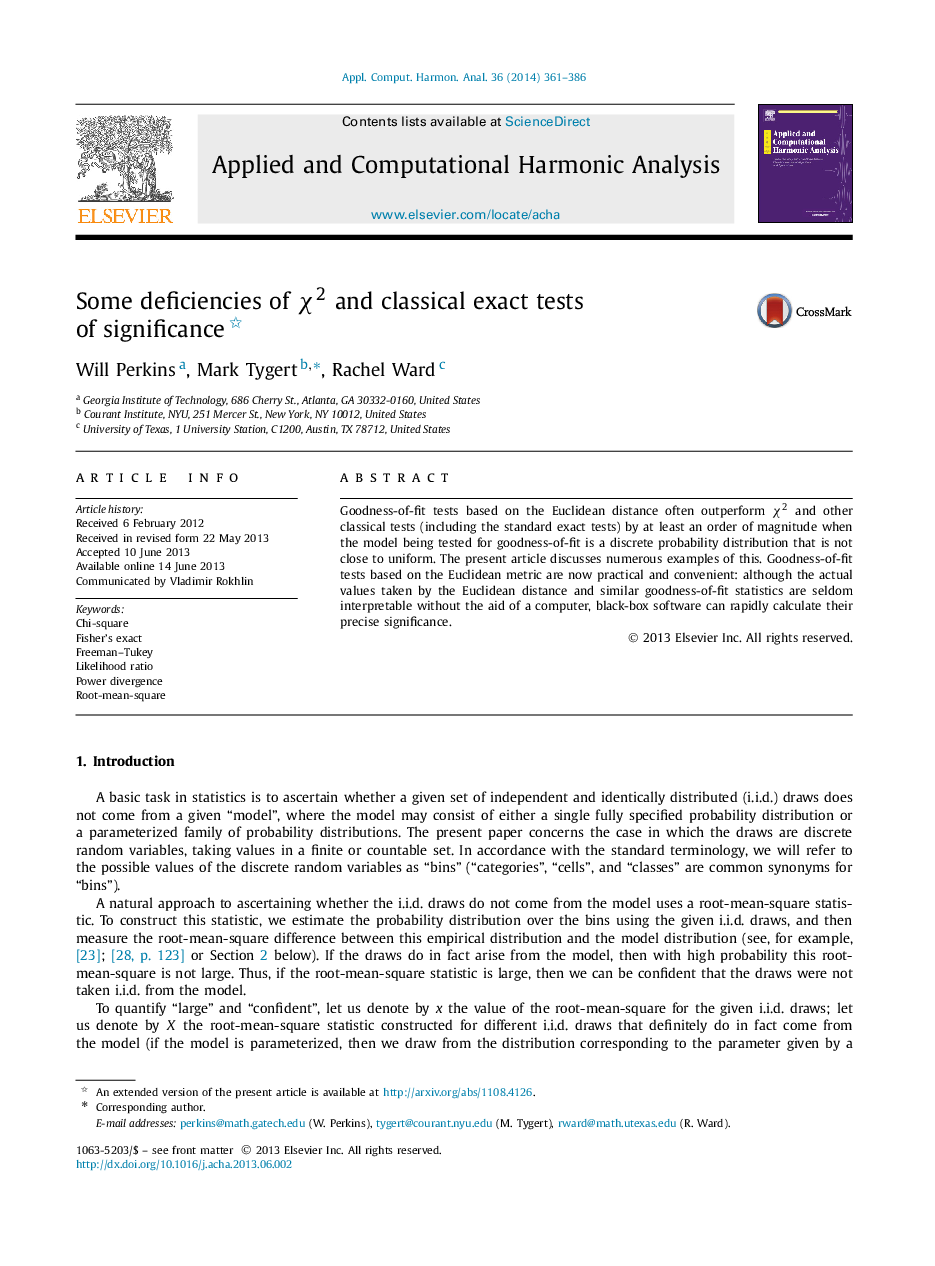| Article ID | Journal | Published Year | Pages | File Type |
|---|---|---|---|---|
| 4605096 | Applied and Computational Harmonic Analysis | 2014 | 26 Pages |
Abstract
Goodness-of-fit tests based on the Euclidean distance often outperform Ï2 and other classical tests (including the standard exact tests) by at least an order of magnitude when the model being tested for goodness-of-fit is a discrete probability distribution that is not close to uniform. The present article discusses numerous examples of this. Goodness-of-fit tests based on the Euclidean metric are now practical and convenient: although the actual values taken by the Euclidean distance and similar goodness-of-fit statistics are seldom interpretable without the aid of a computer, black-box software can rapidly calculate their precise significance.
Related Topics
Physical Sciences and Engineering
Mathematics
Analysis
Authors
Will Perkins, Mark Tygert, Rachel Ward,
